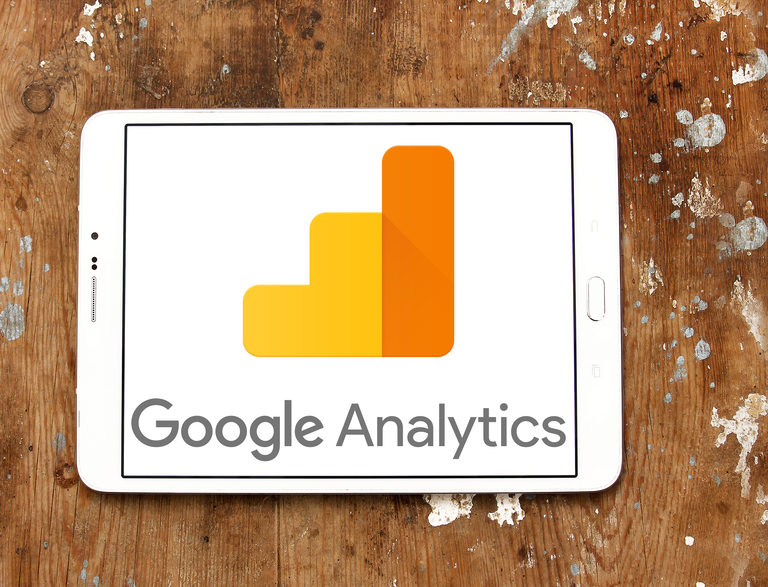The days of rabbit ears and three basic network TV channels are long gone. So, too, are the days when cable and satellite were the only multi-program options. Today, many consumers have cut the cord in favor of streaming and on-demand. And where consumers go, advertising follows. By understanding OTT and CTV advertising, you can make better decisions for marketing your business.
OMG, TOO MANY ACRONYMS!
Of course, the brave new world of audio-visual broadcasting has acronyms aplenty. Fortunately, knowledge of the acronyms provides a base of knowledge for grasping the possibilities.
OTA – Over the Air:
This is just a fancy term for good ol’ broadcast TV. But there’s a distinction from the rabbit ears some of us grew up with. In 2009, broadcasters were required to switch from analog signal to digital. TV stations were assigned new bandwidth, which multiplied the number of channels they could broadcast. Consumers were required to acquire new digital antennae in order to capture the airwaves.
CTV – Connected TV:
Content comes into your TV through a connected device such as Apple TV, Amazon Firestick, Roku, Playstation and other gaming consoles, and Chromecast. The device provides you with OTT services and/or free TV channels.
OTT – Over the Top:
Content is streamed over the internet without the need for a cable or satellite subscription. Consumers use services such as Hulu, Amazon Prime Video, Disney Plus, NBC Peacock, Netflix, kweliTV, and Crackle. Through services, content can stream to a TV, tablet, smartphone, or computer.
WHAT DOES THIS MEAN FOR ADVERTISING?
The way content is disseminated affects advertising.
OTA
 Broadcast TV transmits three types of ads:
Broadcast TV transmits three types of ads:
• Network ads: sold nationally and seen by all viewers throughout the nation – typically in prime time, sports, and national news programs
• Syndicated ads: sold by the syndicators who provide the shows to local TV stations
• Local ads: sold by the local TV station for local viewing
Advantages & Disadvantages
Broadcast TV has a massive reach and is still the go-to for local news and weather. It’s still free, and even many viewers who use OTT services still use OTA. In early 2019, Nielsen reported that there are now 16 million OTA households in the U.S., up 50% over the past eight years and growing at an accelerating rate.
On the other hand, advertising on OTA is expensive per spot. The massive reach means you’ll be capturing lots of eyeballs that are not among your key audience. On broadcast TV, it’s also challenging to achieve the frequency and repetition needed for effective marketing. Tracking is also more difficult.
CABLE AND SATELLITE
 Cable and satellite TV (sorry, no fancy acronym here) offer ads on multiple channels, not including premium channels like HBO and Showtime. Advertisers can choose regions to advertise in, specific shows, or specific channels. However, advertisers are typically “encouraged” to buy rotations on other shows or channels. This gives the client a lower cost per spot, while sellers put ads where they need to fill otherwise empty commercial spots (and not necessarily to the client’s advantage).
Cable and satellite TV (sorry, no fancy acronym here) offer ads on multiple channels, not including premium channels like HBO and Showtime. Advertisers can choose regions to advertise in, specific shows, or specific channels. However, advertisers are typically “encouraged” to buy rotations on other shows or channels. This gives the client a lower cost per spot, while sellers put ads where they need to fill otherwise empty commercial spots (and not necessarily to the client’s advantage).
Advantages & Disadvantages
In addition to nationwide network advertising, cable and satellite TV offer local ad spots, triggered to run during scheduled breaks. Overall, the CPM (cost) is more affordable than other options, unless you want to buy specific programming.
Satellite ads have an additional benefit. While they were once placed regionally, they can now be placed according to more targeted demographics.
On the other hand, ad-supported cable and satellite viewership is falling as more people cut the cord.
UNDERSTANDING OTT AND CTV ADVERTISING BASICS
 Early Netflix streaming users got a peek into how this advertising option works. For each ad, early users were given the option of switching to a more personalized ad experience – for example, car ads instead of movie trailers. The process is more under-the-radar today, but the result is the same: an OTT or CTV service can target an ad to reach a business’s most appropriate viewers.
Early Netflix streaming users got a peek into how this advertising option works. For each ad, early users were given the option of switching to a more personalized ad experience – for example, car ads instead of movie trailers. The process is more under-the-radar today, but the result is the same: an OTT or CTV service can target an ad to reach a business’s most appropriate viewers.
Advantages & Disadvantages
Consumption of OTT content has grown. A report issued by Comscore, a third-party source for cross-platform measurement of digital and TV audiences and advertising, revealed some specifics of this growth. In April 2020, 69.8 million homes used OTT, an increase of 5.2 million homes compared to April 2019. The average home viewed 102 hours of OTT content during that month, a 17-hour increase over April 2019.
Though some of that growth resulted from the pandemic, the trend wasn’t new. Conviva, a video AI platform with clients like HBO, Turner, Hulu, ESPN, and others, said in a report on the first quarter of 2018 that the audience for video delivered over the internet grew “astronomically” compared to the first quarter of 2017. According to Conviva, there was a 114% growth in streaming video hours, reaching nearly 5 billion hours of video viewing. North America specifically saw a 174% increase in viewing hours.
Comscore also reported that as of April 2020, 21 percent of CTV households had cut the cord within the past five years, up three percent from April 2019; 21 percent had no cable or satellite subscription in the past five years, up three percent in the same time frame.
In addition, Comscore noted that growth in the reach of ad-supported services is outpacing that of non-ad-supported services, “presenting a need and opportunity for advertising.”
The number of people watching OTT and CTV offers the first benefit of advertising via these outlets. Even more important, though, is the fact that both are highly targeted. They allow an advertiser to buy an audience, not just a program. Thus, marketing dollars go toward the most valuable viewers.
For example, advertisers can target specific neighborhoods and even specific addresses (based on loyalty program data, for example). Advertisers can also target via site retargeting (viewers who have previously visited your website), search retargeting (viewers who have run searches for keywords relevant to your business), and contextual targeting (placing your ad with relevant programming).
Advertisers can also use demographic targeting, based on who a viewer is (gender, age, education, etc.), lifestyle (sports, hobbies, gardening, pets, dining, financial status, etc.). And the information targeted can dig deep: not just sports, but which sports; not just cars, but what kind of car the consumer is in the market for; not just restaurants, but dining preferences; etc.
Better yet, OTT and CTV advertising can reach viewers that the other outlets can’t and can also reach multiple screens (TV, smartphones, tables, etc.) to achieve the repetition that’s key to effective marketing.
OTT and CTV also offer programmatic platforms that let you track and measure the results of your advertising campaigns.
The downsides are a higher CPM and an inability to hit prime time shows, sports, or local news.
Understanding OTT and CTV advertising can be challenging for small businesses that need to focus on, well, their business. If you’d like to learn more about how to make digital marketing work for your business, contact the team at Ross Media Solutions. We’ve got the background to guide your decision-making and the connections to get you the placements that will work most effectively for you.



